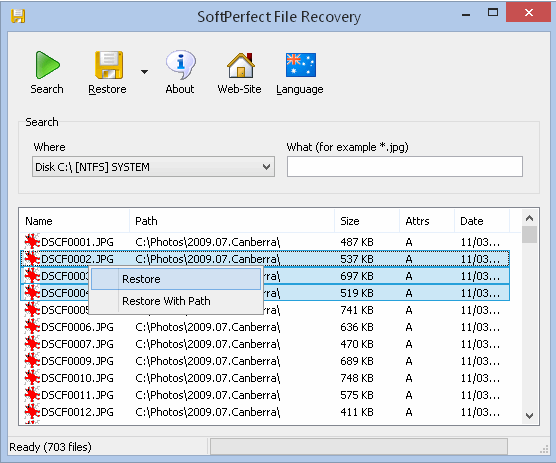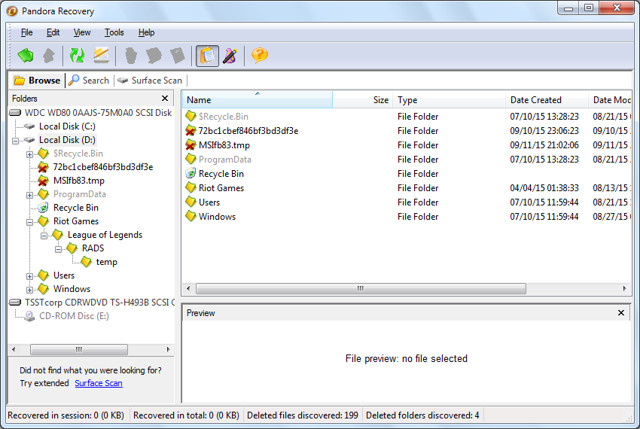
The harsh cold was too much for the camera to contend with, and two weeks of photos disappeared in an instant.

There are, however, some significant drawbacks to this approach it only works for known file types, the filename/date etc will not be known and it can also be slow.įor fragmented files, a technique called file carving can be used to reassemble the data.This technique is best illustrated by my own experience with a digital camera in the Mongolian winter. This can be used to locate the start of the file and its length. By convention, most file formats start with a ‘magic number’ and a header, typically indicating the extent of the file. When there is no file system metadata remaining, the fallback method is to search for file signatures. Microsoft doesn’t go into detail about the methods employed in both of these modes, but it seems that default mode scans the active MFT (NTFS index) for file entries marked deleted, while file segment mode assumes that the original MFT is unavailable or incomplete and instead scans the disk for individual MFT file entry records. WinFR uses this method both in default and file segment modes. Using this residual information is the most effective way to identify, locate and recover a file. Recovery using existing file system metadataĪs previously noted, when a file is deleted from a filesystem, the location and & metadata (information such as the filename, owner, date etc.) is often left behind (although this depends on the filesystem). There are two methods of undeleting a file. Even if the partition is reformatted or the disk is repartitioned, the old data will remain until it is overwritten. For efficiency, the file record is simply flagged as deleted in the file system index. Undelete works on the principle that when you delete a file from a file system, the data isn’t actively erased. What options are there for file recovery on Windows? Undelete In this post we’ll take a look at how WinFR works, and how it compares to other methods of data recovery - from Recycle Bin to regular backups. After all, it isn’t appropriate for all use cases, and certainly shouldn’t be the only thing you use to protect files and data. The Microsoft documentation for WinFR is a useful starting point if you want to learn more about it, but it’s important to understand the tool in the wider context of backup and data recovery. However, if demand and usage grows over the first few months of its release, there’s a chance that eventually it may ship directly with Windows - but only time will tell if that’s something Microsoft is seriously thinking about.
#Best data recovery software of 2012 windows 10
It’s only available in the Microsoft store and the minimum OS it supports is Windows 10 2004.


#Best data recovery software of 2012 install
Unfortunately, the tool isn’t that easy to find and install at the moment.

While Recycle Bin is useful (in some cases better than the undelete tool), it doesn’t cover all file loss scenarios, which makes WinFR a valuable addition to our data recovery toolkits. When Microsoft launched Windows 95, the old DOS undelete tool was replaced with Recycle Bin, which all Windows users will be familiar with today. This is the first official Microsoft undelete utility since MS-DOS 5, and the first for Windows. At the end of June, Microsoft released Windows File Recovery (WinFR).


 0 kommentar(er)
0 kommentar(er)
